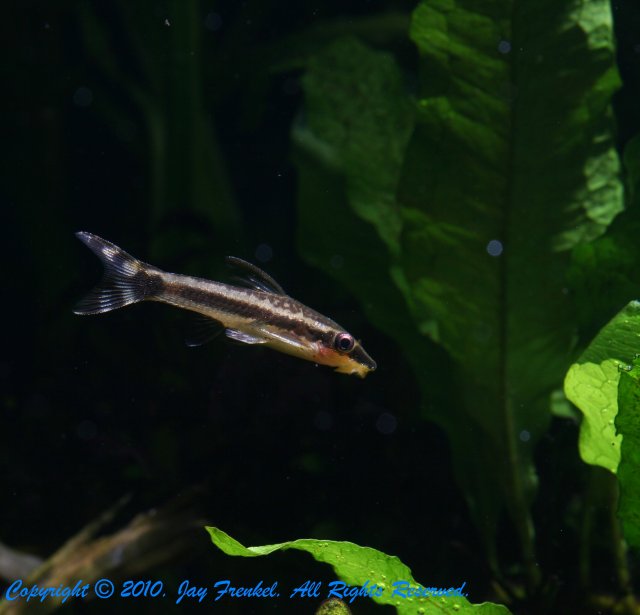Lupin
Registered Member
- Sep 21, 2006
- 21,430
- 13
- 0
- Real Name
- Paul
Gulper Catfish (Asterophysus batrachus)
Scientific Name: Asterophysus batrachus
Common Name: Gulper Catfish, Ogre Catfish, Gupler Driftwood Catfish
Care Level: easy
Size: 11 inches
pH Range: 5.6-7.0
Temperature Range: 24-29 degrees Celsius (76-85° F)
Origin: Brazil
Temperament: peaceful
Compatible Tankmates:
While gulper catfish are rather peaceful in nature, be very careful when selecting their tankmates. These are best left by themselves rather than mixing (and even risking) other tankmates. Fish even larger than them have been reported to end up in their stomach. There are some cases where arowanas and crenicichlas thought to escape their gulping behavior have been instead found inside the stomach of the fish with the fish looking grotesquely humongous in comparison to its original size.
Diet:
Carnivorous. Gulper catfish will eat anything you can give them regardless of the size of its foods. Anything new introduced to their tanks will be followed by these fish and eventually eat them.
Tank Size for Adult: 55g.
Narrative:
Gulper catfish are one of the most impressive predatory catfish. These fish are found in the blackwaters around Brazil and several other countries. They can be seen lurking around looking for prey and eventually ambushing them regardless of their size. Even if the prey is bigger than it, it will attempt at all costs to keep swallowing it until it succeeds its ordeal.
According to planetcatfish.com, the skin of these catfish is rather thin and flexible thus enabling these fish to swallow anything and look abnormally large for their actual size.
Reference: www.planetcatfish.com
Scientific Name: Asterophysus batrachus
Common Name: Gulper Catfish, Ogre Catfish, Gupler Driftwood Catfish
Care Level: easy
Size: 11 inches
pH Range: 5.6-7.0
Temperature Range: 24-29 degrees Celsius (76-85° F)
Origin: Brazil
Temperament: peaceful
Compatible Tankmates:
While gulper catfish are rather peaceful in nature, be very careful when selecting their tankmates. These are best left by themselves rather than mixing (and even risking) other tankmates. Fish even larger than them have been reported to end up in their stomach. There are some cases where arowanas and crenicichlas thought to escape their gulping behavior have been instead found inside the stomach of the fish with the fish looking grotesquely humongous in comparison to its original size.
Diet:
Carnivorous. Gulper catfish will eat anything you can give them regardless of the size of its foods. Anything new introduced to their tanks will be followed by these fish and eventually eat them.
Tank Size for Adult: 55g.
Narrative:
Gulper catfish are one of the most impressive predatory catfish. These fish are found in the blackwaters around Brazil and several other countries. They can be seen lurking around looking for prey and eventually ambushing them regardless of their size. Even if the prey is bigger than it, it will attempt at all costs to keep swallowing it until it succeeds its ordeal.
According to planetcatfish.com, the skin of these catfish is rather thin and flexible thus enabling these fish to swallow anything and look abnormally large for their actual size.
Reference: www.planetcatfish.com
Last edited:



